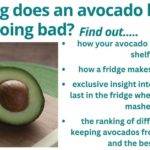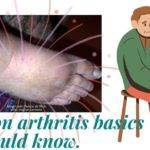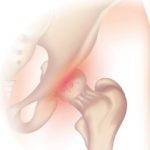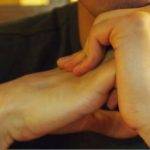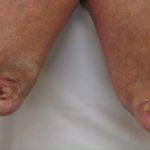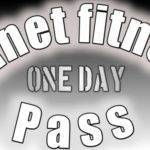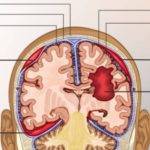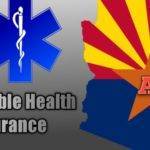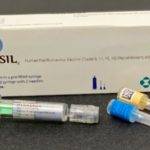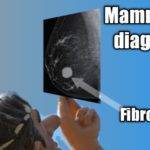
Table of Contents
Your fat burn heart rate is the rate at which your body uses up the most amounts of the fat stored in your body for the release of energy than it does in both the resting heart rate and vigorous exercises heart rates. This is estimated to be in the range of 64-76%1 Centers for Disease Control and Prevention. (governmental authority) visit source [cited 2022 May 5] of your maximum heart rate.
It correlates with moderate-intensity exercises and early stages of vigorous workouts.
Your body burns more amounts of fat than any other source of energy even at the resting heart rate. However, we talk of fat burn heart rates with regards to the points when more fats are being oxidized the most.
There are several determinants of resting heart rates among which are age, fitness level, and genetic factors.2Harvard Medical School. (scholarly source) visit source Resting heart rate typically lies between 60 to 90 or 100 beats per minute (BPM). The faster the heart beats above the resting rate owing to physical activity the more fat is burned or oxidized to release energy.
A study published in the National Library of Medicine3 National Library of Medicine. (governmental authority) visit source [Cited 2022, May 5th] has shown that during workouts there is a peak period in fat metabolism called maximum fat oxidation (MFO). This strictly lies between 60.2% to 80% of your maximum heart rate which shows there is an overlap between moderate and vigorous exercises as regards the highest points in fat metabolism.
In this article, we’ll take a detailed look at what fat burn heart rate is, how to calculate your rate by age, the exercises that get you to your zone, and much more.
Fat burn heart rate by age calculation.
Before we can talk about calculating the exact fat burn heart rate we need to understand what should be the parameters for this calculation and their meaning.
Heart Rate: The number of times your heart beats in a minute at a given instance. This changes based on what you are doing at that moment
Resting heart rate: The least number of times your heart beats per minute while you are at rest or immediately after sleep. This varies among individuals of different ages and fitness levels. The average normal resting heart rate ranges from 60 to 100 beats per minute but it could be much lower for sportsmen and women.
Target heart rate: This is the expected heart rate for what you may want to achieve.
Maximum Heart Rate (MHR): It’s the maximum number of times per minute your heart can safely beat following extremely strenuous exercise like sprinting up a hill. You can find a good estimate of this figure by subtracting your current age from 220. For instance, the MHR for a 30-year-old is 190 BPM (220-30).
Almost every other calculation is done based on the percentage of this MHR. Fat burn heart rate is taken to be the heart rate you attain mostly during moderate exercises. A couple of articles put this figure at 50-70% of MHR, however, in this article, we’ll make use of the figure given by the Centers for Disease Control and Prevention (CDC) which is 64-76% of MHR.4 The Centers for Disease Control and Prevention. (governmental authority) visit source [cited 2022 May 5]
Additionally, we’ll use the midpoint between the range of 64-76% as our fat burn target heart rate which is 70%. So, for a 30-year-old, the fat burn target heart rate is 70% of MHR which is 70% of 190BPM. This gives us an approximate value of 137 BPM.
These calculations are less accurate as one age and they are less reliable as determinants of safe heart rates for children
Keep in touch by signing up for our newsletter:
Fat burn, target heart rate.
The target heart rate is calculated based on 70% of the MHR.
We’ve used the range of 64-76%, according to the CDC,5 The Centers for Disease Control and Prevention. (governmental authority) visit source [cited 2022 May 5] in our calculations but another publication in the National Library of Medicine6 National Library of Medicine. (governmental authority) visit source [cited 2022 May 5] gave the optimal heart rate for fat oxidation between 60.2% and 80%.
Though this represents a more substantial overlap between moderate and vigorous exercises, we look at it as the midpoint for fat burn target heart rate which remains roughly 70% of MHR.
From the table below, you’ll notice that the older you get the lower your fat burn target heart rate.
|
Fat burn target heart rate by age. |
||
|
Age (yrs) |
MHR (220-age) in BPM |
Fat burn HR (70% of MHR) in BPM |
|
20 |
200 |
140 |
|
25 |
195 |
137 |
|
30 |
190 |
133 |
|
35 |
185 |
130 |
|
40 |
180 |
126 |
|
45 |
175 |
123 |
|
50 |
170 |
119 |
|
55 |
165 |
116 |
|
60 |
160 |
112 |
|
65 |
155 |
109 |
|
70 |
150 |
105 |
|
HR: Heart rate, MHR: Maximum heart rate. BPM: Beats Per Minute. |
||
What is the fat burn heart rate Zone?
Whereas anyone will still burn some fat and lose weight while exercising regardless of the heart rate, the fat burn heart rate zone is the range within which your body burns the most amounts of fats for the release of energy.
When exercising, the body derives its energy from the oxidation of fats. The fat metabolism happens even at resting heart rates but begins to step up as the heart rate increases. Within the range of moderate exercises fat metabolism remains chiefly the primary source of energy for your body.
From the point of approximately 64% of your MHR, the oxidation of your fat stores reaches peak values. This is the lower end of the zone and it’s within the heart rate for moderate exercises. As the intensity of the exercise builds up the heart rate ramps up with it.
With an increased heart rate towards the upper end of the range which represents 76% of your MHR, there is a demand for quicker energy sources to maintain the tempo of the exercise. This is the point at which your heart rate begins to get into the range of vigorous workouts.
The glycogen stores and carbohydrates in your body represent sources of quick energy. So the body begins to use increasing amounts of these energy sources with a corresponding drop in energy sourced from fats.
In summary, the range in your heart rate within which your body burns the most amounts of fats for the release of energy represents your fat burn heart rate zone. Getting to this zone during your workout will ensure your weight loss efforts pay off well.
Below is a table that shows the heart rate zones for selected ages.
|
Fat burn heart rate zone by age. |
||
|
Age (yrs) |
MHR (220-age) in BPM |
Fat burn HR zone(64-76% of MHR) in BPM |
|
20 |
200 |
128-152 |
|
25 |
195 |
125-148 |
|
30 |
190 |
122-144 |
|
35 |
185 |
118-140 |
|
40 |
180 |
115-136 |
|
45 |
175 |
112-133 |
|
50 |
170 |
109-129 |
|
55 |
165 |
106-125 |
|
60 |
160 |
102-122 |
|
65 |
155 |
99-118 |
|
70 |
150 |
96-114 |
|
HR: Heart rate, MHR: Maximum heart rate. BPM: Beats Per Minute. |
||
Tracking your heart rate zone during a workout.
The means of easily checking your heart rate is by placing the tips of your fingers on certain parts of your body. This may be your wrist or neck where your pulse could be felt. The number of beats felt in 30 seconds is multiplied by 2 which gives your pulse rate at the time.
You’ll need to stop exercising to get this measurement. Fortunately, there are devices you can use to keep track of your heart rate in real time without stopping your workout. These are electronic tools you could strap around your chest or the wrist during your workout and they have been proven to be quite accurate.7 National Institute of Health. (governmental authority) visit source [cited 2022 May 5th ]
They make it easier and more convenient to monitor and maintain your heart rate within the fat-burning heart rate zone in real time if you are working for weight loss.

Getting the right workout for fat burn heart rate.
Fat burn heart rates can be monitored and maintained during workouts by using electronic devices, however, you could still determine your rate by simple speech tests.8 Health.gov (governmental authority) visit source [cited 2022 May 5th ]
If during your workouts you are not out of breath such that you can speak and keep up with a conversation, then you are probably working within your fat-burning zone. On the other hand, if you are gasping for breath and can’t speak or maintain a conversation, then you’ve likely gone beyond the zone and into your heart rate for vigorous exercises.
It is important to note that at whatever rate you are working, calories are being burnt which could result in weight loss.
There are workouts or physical activities that will naturally place you either in your fat-burning heart rate zones or cardio zones. Knowing these could help you maintain your desired zone even in the absence of monitoring devices.
For the moderate exercises or fat-burning zones, you would want to engage in exercises like:
- Gardening,
- Brisk walking,
- Cycling at slow speeds,
- Dancing,
- Table tennis.
Exercises you could do that get you well beyond your fat-burning zone into the cardio zone are,
- Burpee exercises,9 Healthcrust article. (trustworthy) see the article
- Sprinting,
- Wrestling,
- skipping or Jumping rope,
- Cycling at a fast pace, etc.

Image by Taco Fleur
How long to stay in the fat-burning zone?
Studies have shown that both short-term vigorous exercises and longer-duration moderate exercises are equally capable of ensuring weight loss through the burning of body fats.10 National Institute of Health (governmental authority) visit source [cited 2022 May 5th ] The only difference is the timing. Based on this vigorous exercises are deemed to be more time-efficient but this may not be for everyone.
To achieve weight loss goals within the fat-burning heart rate zone, you may have to engage in your workout for up to 30 minutes. The longer you carry on, the more rewarding it gets.
The heart health benefits.
Your heart rates could depend not only on your age but on genetics and level of physical fitness.
Workouts are not the only means of losing weight but could reduce your resting heart rate and by extension, your risk of death from cardiovascular diseases.11Jama network. (scholarly source) visit source
Controlling portion sizes in addition to exercises could enhance any fitness goal in no small measure. The Planet Fitness total body enhancement machine for black card holders12 Healthcrust article. (trustworthy) see the article could represent another cool option for your fat-burning or weight-loss goals.























